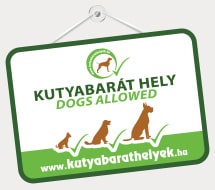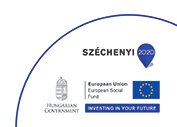The expert on dog-friendly places
dogfriendlyplaces.eu
Kuvasz

Kuvasz
The Kuvasz is used as a watch and guard dog for houses, property and other valuables, as well as for people. He has also been used as a hunting and scenting dog.
FCI-Standard N° 54
KUVASZ
Origin: Hungary
Utilization:
The Kuvasz is used as a watch and guard dog for houses, property and other valuables, as well as for people. He has also been used as a hunting and scenting dog.
FCI-Classification:
- Group 1 Sheepdogs and Cattle Dogs (except Swiss Cattle Dogs).
- Section 1 Sheepdogs.
- Without working trial.
Bried Historical Summary:
- The Kuvasz is a long established, ancient Hungarian Shepherd Dog. His ancestors came into the Carpathian basin at the time of occupation by the Magyars. These dogs were needed to watch and guard their flocks against beasts of prey and thieves. Because of his hunting instinct, the Kuvasz was the preferred hunting dog at the time of King Matthias Corvinus. Since the decline in stock-herding, he has much less been used for his original duties and he has settled in villages and later even in towns.
General Apperance:
- The dogs of this breed are strong and large and carry a dense, wavy, white coat. Their pleasing appearance radiates nobility and strength. The individual body parts fit together harmoniously, the limbs being neither too short nor too long. The bone structure is strong but not coarse. The strong muscles are lean, the joints show clear outlines. Seen from the side, the body forms a prone rectangle, almost a square. Well muscled he shows a strong build, a lively temperament and great agility. His appearance embodies a tireless working ability.
Important Proportions:
- The body length slightly exceeds the height at the withers.
- The deepest point of the brisket is approximately on a level with half of the height at the withers.
- The muzzle is slightly shorter than half of the length of the head.
Behavior / Temperament:
- The Kuvasz is brave and fearless. He defends the people entrusted to his care and his protection and their property, even with his life. He is self-confident and may become aggressive if ill-treated. He is faithful, dependable and loves his master and his surroundings. He needs plenty of exercise and must be kept busy. He is undemanding. His care is easy and he can stand very severe weather conditions. He appreciates any love and solicitude given to him.
BODY STRUCTURE
1. Head
- The Kuvasz' head is typically wedge-shaped, in harmony with his body, pleasing, noble, and it shows a considerable strength. The Kuvasz can mainly be distinguished from other breeds by his head shape. The head is characteristically lean and dry. In dogs the head is slightly more massive than in bitches.
- CRANIAL REGION:
- Skull: Broad, forehead slightly protruding. In the middle of the forehead, there is a distinct furrow.
- Stop: Barely pronounced.
- FACIAL REGION:
- Broad, long, well muscled.
- Nose: The black noseleather is cut off blunt.
- Muzzle: The bridge of nose is straight. The muzzle tapers gradually but is never pointed.
- Lips: Black, tightly fitting. The corner of the mouth has jagged rims.
- Jaws/Teeth: Well developed, strong, regular and complete scissor bite, according to the dentition formula.
- Eyes: Set in slightly slanting, almond shaped, dark brown. The rim of the eyelids is black and close-fitting to the eyeball.
- Ears: Set on at medium height. One third of the ears lifts from the base away from the skull in a curve, then dropping, lying close to the head. The leathers are V-shaped with rounded tips. When alert, the ears are slightly raised. Never prick or twisted.
2. Neck
- Rather short than of medium length and well muscled. Forms an angle of 25 to 30 degrees to the horizontal. Crest of neck is short. Skin on throat taut, no dewlap. In male dogs, collar and mane are significant.
3. Body
- Seen from the side, the body forms a prone rectangle, only slightly differing from a square.
- Withers: Long, rising markedly above level of back.
- Back : Of medium length, straight, broad, well muscled and taut.
- Loins: Short, in taut continuation of the back.
- Croup: Slightly sloping, well muscled, broad. The very dense coat gives the croup the appearance of being slightly overbuilt.
- Forechest: Because of the strongly developed muscles, the forechest is rounded, the point of the sternum only slightly protruding.
- Chest: Deep, long and slightly arched.
- Underline and belly: In continuation of the ribcage, tucked up towards the rear.
4. Tail:
- Set on low following the ligthly sloping croup in a staight line. Vertically down with the tip curved slightly upwards, but not crooked. When the dog is alert or roused, it may, at most, be raised to the level of the topline.
5. Limbs
- FOREQUARTERS:
- The front legs, supporting the body, are vertical down to the carpal joints. They are parallel and moderately far apart. Seen from the front, the position of the front legs is correct if a vertical line drawn from the shoulder joint runs along the axis of the front legs and meets the feet between the 3rd and 4th toes.
- Seen from the side, the position is correct if a vertical line drawn from the elbow joint to the ground, runs through the centre of the legs down to the carpal joints.
- Shoulders: Shoulder blade long, sloping, muscled. Close-fitting and tight to the ribcage, but flexible.
- Upper Arm: Of medium length, well muscled. The upper arm and the shoulder blade form an angle of 100 to 110 degrees.
- Elbows: Dry, close-fitting to the ribcage, turning neither in nor out. Upper and lower arm form an angle of 120 to 130 degrees.
- Forearm: Relatively long, straight, compact with lean muscles. With strong sinews reaching down to the carpal joint.
- Carpal joint: Well developed, taut, with sinews of steel.
- Pastern : Relatively short, lean, sloping slightly (angle to vertical 10 to 15 degrees).
- Forefeet: Round or slightly oval, taut. Toes are short and highly arched so that their middle part does not touch the ground. Elastic, well knit. Pads are springy, black. Nails are hard, strong, black or slate grey in colour.
- HINDQUARTERS:
- The position of the hind legs seen from the side is correct if the stifle joint is positioned vertically below the iliac crest and the foot under the hip joint. A vertical line from the ischiatic tuberosity touches the heel bone.
- Seen from the rear, the position of the hind legs is correct if a vertical line from the ischiatic tuberosity runs along the axis of the limbs, being parallel to both sides and meeting the ground moderately wide apart.
- Upper thigh: With long, broad, massive muscles closely connected to the pelvis. Pelvis and upper thigh form an angle of 100 to 110 degrees.
- Stifle: Voluminous. The angle between upper thigh and lower thigh is 110 to 120 degrees.
- Lower thigh: The long massive muscles extend to the hock with strong sinews. Seen from the rear, vertical and parallel on both sides, also to the axis of the body.
- Hocks: Broad, voluminous, dry, sinewy. Angle of hock 130 to 140 degrees. Rear pastern: Long, vertical.
- Hind feet: Oval, otherwise like the forefeet.
6. Gait / Movement
- Wide, slow steps. When trotting, the movement is light footed, springy, ground covering, lively, constant and tireless. Elbows turning neither in nor out.
7. Skin:
- Well pigmented, slate grey and tight.
8. Coat
- Hair: Moderately harsh, wavy, slightly stiff, not tending to mat. Under the coarser topcoat, there is a finer downy undercoat. The head, ears and feet are covered by short (1-2 cm long), dense, smooth hair. The front and sides of the front legs as well as the hind legs below the stifles are covered by equally short (1-2 cm long) straight hair. There are featherings of 5-8 cm in length on the back of the legs; on the hind legs, they reach to the hocks. The neck has a ruff which extends to a mane reaching to the chest. This is particularly pronounced in male dogs. On body, upper thigh and upper arm, the coat is of medium length (4-12 cm long), abundantly wavy and it forms crests, ridges and tassels. The tail is covered, along its entire length, by dense, wavy coat which can even reach a length of 10-15 cm at the hip of the tail.
- Colour: White, ivory colour is permitted. Noseleather, rim of eyelids and lips are black. Pads are black or slate grey. A dark colour is desired for roof of mouth but pink patches are permissible.
8. Size and weight:
- Height at withers
- Dogs: 71 – 76 cm
- Bitches: 66 – 70 cm
- Weight:
- Dogs: 48 – 62 kg
- Bitches: 37 – 50 kg. St-FCI
9. Faults
- Any departure from the foregoing points should be considered a fault and the seriousness with which the fault should be regarded should be in exact proportion to its degree and its effect upon the health and welfare of the dog.
10. Disqualifying faults
- Aggressive or overly shy.
- Any dog clearly showing physical or behavioural abnormalities shall be disqualified.
- Pronounced Stop.
- Lack of pigment on noseleather, lips, rims of eyelids.
- One or more teeth missing (Incisors, Canines, Premolars 2-4, Molars 1-2). More than 2 PM1 missing. The M3 are disregarded.
- Under- or overshot, wry mouth. Gap between upper and lower incisors of more than 2 mm.
- Entropion, Ectropion.
- Prick ears.
- Tail which is raised above topline even in repose or curled towards rear.
- Coat tending to be shaggy, curly or not wavy or wiry.
- Legs covered by long hair.
- Any departure from the permitted colour.
N.B.:
- Male animals must have two apparently normal testicles fully descended into the scrotum.
- Only functionally and clinically healthy dogs, with breed typical conformation, should be used for breeding.













